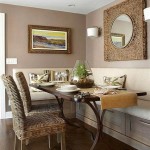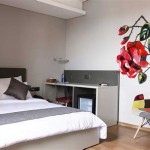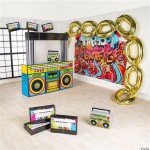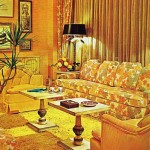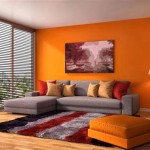Yellow and Blue Living Room Decor: A Comprehensive Guide
The combination of yellow and blue in living room decor offers a versatile palette capable of creating a range of atmospheres, from vibrant and energetic to calm and serene. This color scheme is rooted in classic color theory, where yellow and blue are considered complementary colors, albeit with nuances depending on their specific shades. Understanding how to balance these elements effectively is critical to achieving a cohesive and aesthetically pleasing living space.
The appeal of yellow and blue lies in its adaptability. Yellow, known for its association with sunlight and optimism, can energize a room, while blue, often linked to tranquility and stability, grounds the space. The key to successful implementation is selecting the right shades and considering the room's natural light, size, and existing architectural features.
Understanding the Psychology of Yellow and Blue
Delving into the psychology of color provides a valuable foundation for understanding why yellow and blue work well together. Yellow is frequently associated with happiness, creativity, and optimism. In interior design, it can brighten dark spaces and create a welcoming atmosphere. However, an overabundance of yellow can be overwhelming, leading to feelings of anxiety or restlessness. This necessitates careful consideration of the shade of yellow used and the extent of its application.
Blue, on the other hand, is generally perceived as calming and peaceful. Different shades of blue evoke different emotions; lighter blues suggest relaxation and openness, while darker blues convey sophistication and authority. In a living room, blue can create a sense of serenity, making it an ideal color for relaxation and conversation. Using too much dark blue, however, can make a room feel cold or depressing. Therefore, the balance between yellow and blue is crucial to achieving a harmonious and inviting space.
The interplay between these psychological effects allows designers to manipulate the mood of the living room. A bright, sunny yellow paired with a softer, pastel blue can create a cheerful and airy ambiance. Conversely, a muted mustard yellow combined with a deep navy blue results in a more sophisticated and refined aesthetic. The choice depends entirely on the desired atmosphere and the personal preferences of the homeowner.
Implementing Color Combinations: Paint, Furniture, and Accessories
The practical application of yellow and blue in living room decor involves careful selection of paint colors, furniture pieces, and accent accessories. The walls are usually the first consideration. A common approach is to use a neutral primary color, such as off-white or gray, and then introduce yellow and blue through accent walls, furniture, and accessories. This prevents the room from becoming visually overwhelming and provides a more balanced color scheme.
If opting for a bolder approach with colored walls, it is essential to consider the room's lighting and size. A small room might benefit from a lighter shade of blue, paired with yellow accents to add brightness. A larger room, however, can handle darker shades of blue or even a feature wall in a vibrant yellow. The choice of paint finish also matters; matte finishes absorb light, creating a softer look, while glossy finishes reflect light, adding vibrancy and depth.
Furniture plays a significant role in anchoring the color scheme. A blue sofa can serve as a focal point, complemented by yellow accent chairs or throw pillows. Alternatively, a neutral sofa can be paired with yellow and blue throw blankets, cushions, and artwork. The key is to distribute the colors evenly throughout the room, creating visual balance and preventing one color from dominating the space. Wooden furniture can also play a key role, as the natural tones can complement both yellow and blue, adding warmth and texture to the overall aesthetic.
Accessories provide the finishing touches and allow for greater flexibility in adjusting the color scheme. Yellow and blue artwork, rugs, curtains, and lamps can be easily swapped out to update the room's look or to reflect seasonal changes. Metallics, such as gold or silver, can also be incorporated to add a touch of glamour and sophistication. Plants can further enhance the space by introducing natural elements and softening the overall color palette. The careful selection and placement of these accessories are crucial for creating a cohesive and inviting living room.
Varying Shades and Styles for Different Effects
The success of a yellow and blue living room hinges on the specific shades chosen and the overall design style. Different shades of yellow and blue evoke distinct feelings and lend themselves to different aesthetic approaches. For instance, a soft, pastel yellow paired with a light, airy blue creates a tranquil and inviting space, perfect for a coastal or Scandinavian-inspired design.
In contrast, a bolder combination of mustard yellow and navy blue offers a more sophisticated and dramatic look, suitable for a mid-century modern or art deco-inspired setting. The key is to consider the desired mood and the existing architectural features of the room when selecting the specific shades. The room's lighting also impacts color perception. Natural light tends to make colors appear brighter and more vibrant, while artificial light can alter their appearance. It’s important to test paint samples and fabric swatches in the room under different lighting conditions before making final decisions.
Beyond the specific shades, the overall design style further influences the application of yellow and blue. A traditional living room might incorporate these colors through patterned fabrics, such as floral or paisley designs, and ornate furniture pieces. A modern living room, on the other hand, might feature clean lines, minimalist furniture, and bold blocks of color. The interplay between color and style determines the overall aesthetic and ensures a cohesive and visually appealing design.
Furthermore, the texture of the materials used can significantly impact the perceived color. A velvet blue sofa, for example, will appear richer and more luxurious than a linen blue sofa. Similarly, a textured yellow wall will add depth and character to the room. Considering the interplay of color, texture, and style is crucial for creating a living room that reflects individual tastes and preferences.
Ultimately, the selection of yellow and blue shades should harmonize with the existing elements of the living room, including flooring, architectural details, and personal belongings. The goal is to create a space that is both aesthetically pleasing and functional, reflecting the homeowner's personality and providing a comfortable and inviting environment.

11 Best Blue Yellow Living Room Ideas Decor Design

20 Charming Blue And Yellow Living Room Design Ideas Brown Decor

Yellow And Navy Living Rooms Design Ideas

Blue And Yellow Colour Schemes House Garden

Decor Ideas In Blue And Yellow For Your Home Designcafe

Living Room Ideas Mix Blue And Yellow Decor

Blue And Yellow Living Room With Glossy Walls Contemporary

Spring Home Tour With Vibrant Yellows And Pretty Blues

Decor Ideas In Blue And Yellow For Your Home Designcafe

Yellow And Blue Interiors Living Rooms Bedrooms Kitchens
Related Posts
